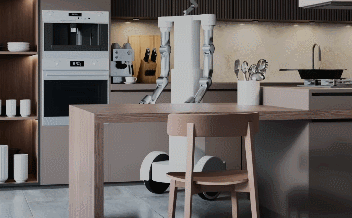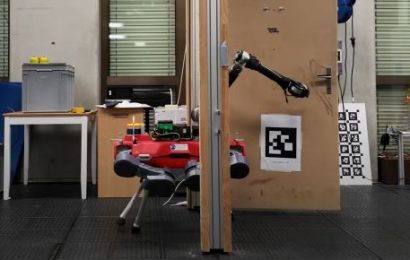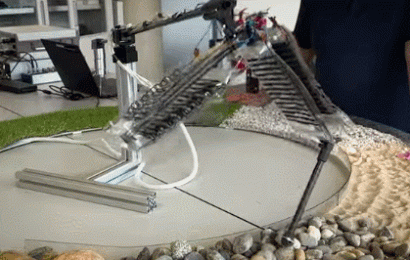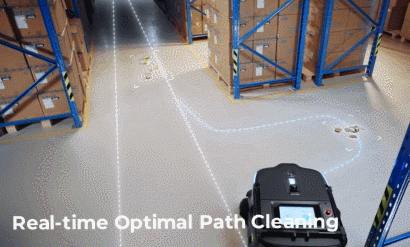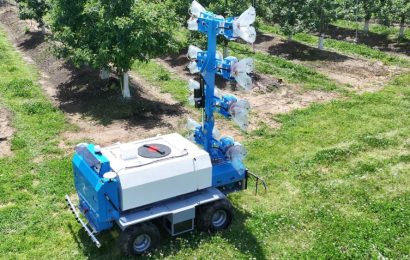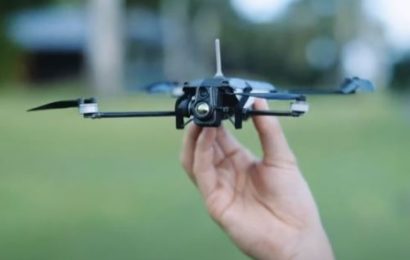Video Friday: Jumping Robot Leg, Walking Robot Table

Video Friday is your weekly selection of awesome robotics videos, collected by your friends at IEEE Spectrum robotics. We also post a weekly calendar of upcoming robotics events for the next few months. Please send us your events for inclusion.
ICRA@40: 23–26 September 2024, ROTTERDAM, NETHERLANDS
IROS 2024: 14–18 October 2024, ABU DHABI, UAE
ICSR 2024: 23–26 October 2024, ODENSE, DENMARK
Cybathlon 2024: 25–27 October 2024, ZURICH
Enjoy today’s videos!
Researchers at the Max Planck Institute for Intelligent Systems and ETH Zurich have developed a robotic leg with artificial muscles. Inspired by living creatures, it jumps across different terrains in an agile and energy-efficient manner.
Thanks, Toshi!
ETH Zurich researchers have now developed a fast robotic printing process for earth-based materials that does not require cement. In what is known as “impact printing,” a robot shoots material from above, gradually building a wall. On impact, the parts bond together, and very minimal additives are required.
[ ETH Zurich ]
How could you not be excited to see this happen for real?
[ arXiv paper ]
Can we all agree that sanding, grinding, deburring, and polishing tasks are really best done by robots, for the most part?
Thanks, David!
Using doors is a longstanding challenge in robotics and is of significant practical interest in giving robots greater access to human-centric spaces. The task is challenging due to the need for online adaptation to varying door properties and precise control in manipulating the door panel and navigating through the confined doorway. To address this, we propose a learning-based controller for a legged manipulator to open and traverse through doors.
[ arXiv paper ]
Isaac is the first robot assistant that’s built for the home. And we’re shipping it in fall of 2025.
Fall of 2025 is a long enough time from now that I’m not even going to speculate about it.
[ Weave Robotics ]
By patterning liquid metal paste onto a soft sheet of silicone or acrylic foam tape, we developed stretchable versions of conventional rigid circuits (like Arduinos). Our soft circuits can be stretched to over 300% strain (over 4x their length) and are integrated into active soft robots.
[ Science Robotics ] via [ Yale ]
NASA’s Curiosity rover is exploring a scientifically exciting area on Mars, but communicating with the mission team on Earth has recently been a challenge due to both the current season and the surrounding terrain. In this Mars Report, Curiosity engineer Reidar Larsen takes you inside the uplink room where the team talks to the rover.
[ NASA ]
I love this and want to burn it with fire.
[ Carpentopod ]
Very often, people ask us what Reachy 2 is capable of, which is why we’re showing you the manipulation possibilities (through teleoperation) of our technology. The robot shown in this video is the Beta version of Reachy 2, our new robot coming very soon!
[ Pollen Robotics ]
The Scalable Autonomous Robots (ScalAR) Lab is an interdisciplinary lab focused on fundamental research problems in robotics that lie at the intersection of robotics, nonlinear dynamical systems theory, and uncertainty.
[ ScalAR Lab ]
Astorino is a 6-axis educational robot created for practical and affordable teaching of robotics in schools and beyond. It has been created with 3D printing, so it allows for experimentation and the possible addition of parts. With its design and programming, it replicates the actions of #KawasakiRobotics industrial robots, giving students the necessary skills for future work.
[ Astorino ]
I guess fish-fillet-shaping robots need to exist because otherwise customers will freak out if all their fish fillets are not identical, or something?
[ Flexiv ]
Watch the second episode of the ExoMars Rosalind Franklin rover mission—Europe’s ambitious exploration journey to search for past and present signs of life on Mars. The rover will dig, collect, and investigate the chemical composition of material collected by a drill. Rosalind Franklin will be the first rover to reach a depth of up to two meters below the surface, acquiring samples that have been protected from surface radiation and extreme temperatures.
[ ESA ]
